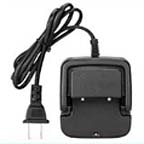Product Review
Baofeng DM-V1
DMR Handheld
Single Band UHF
John 'Miklor' K3NXU
April 2020
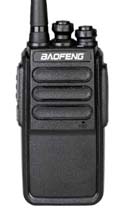
|
Baofeng DM-V1
In the Box Included with the radio are the: - 3.7v 2000mAh Li-Ion Battery - 35 page User Guide – English - 120 / 240v Charger base & AC adapter - Belt clip - Antenna – 4.5" (11.5cm) SMA-F - Earphone - Programming Cable (USB to micro USB) - Software Diskette General Description - UHF only - DMR / FM - 1W / 2W transmit - 64 zones (16 chan / zone) - 1,024 channels - No display - No keypad Complete Specs - Link Enclosure The DM-V1 case has a decent feel for a light weight radio and fits my hand well. It weighs in at around 6.7 oz (190g) with the battery and antenna attached. The case measures 5.0 x 2.4 x 1.4" (H x W x D) The DM-V1 has a 16 position channel switch with 64 zone possibilities. There is no display or keypad.
There is only one programmable key on the side under the PTT button. Although there are two options (long and short press), one is usually dedicated to changing zones leaving only one more option.
The frequency range is UHF 400-470MHz. The radio supports both tier II DMR (12.5kHz), and WB/NB FM analog. The specifications show 1w/2w power levels. A calibrated Bird Termaline wattmeter shows the following.
Transmit Audio
The transmit audio reports were good. There is no audio gain control in the software, but holding the radio approximately an inch (2.5cm) or less away produces full, clear transmit audio. Bit Error Rate (BER) The minimum acceptable BER should be no more than .2%. The minimum I was able to achieve with this radio was an unusually high 3.9%. This was after adjusting for the lowest possible BER. The main cause of a high rate is distortion and bit synchronization. Note: I am able to achieve a BER of 0.2% or less with all of my other handhelds. Refer to the "Factors affecting the BER" section. Receiver and Audio The receiver sensitivity is sub standard. Side by side with my other handhelds (using the same antenna), there is a significant difference in receive sensitivity, easily detectable by ear. The receive audio quality also leaves a lot to be desired. The audio frequency range is limited and stations sound a bit distorted and hollow sounding. No Display There is no display on the DM-V1. The radio announces the Zone number when changed and Channel number, so you will need to have a good memory or carry a 'Cheat Sheet' with this one. Programming This is where the radio becomes cumbersome. The software was never designed specifically for this radio. It was retrofitted from a fuller featured DMR radio with display, keypad and many features not available on this radio. For an experienced DMR USER, this might not be a major issue, but could be very confusing for a first time user. Note: The Upload and Download speeds are extremely slow. The average upload time was 2.5 minutes while the download time was 1.5 minutes, even for the simplest code plug. Here is a link to the Programming Guide for the DM-V1. Firmware There appears to be a firmware upgrade option under the Tools menu, however there is no way to determine the current Firmware Version as it is not displayed in the software. For me personally to upgrade this radio I would need a little more information. Programming Cable The programming cable (included with the radio) is a standard over the counter USB to microUSB cable. The UART chip is in the radio, not the cable. The driver for this chip, however, will not automatically download and installed from Windows. There is a separate driver CD (included) that includes the driver with instructions on how to load this to your Win PC or laptop. Note: I found micro USB port was not aligned with the case. (as shown below) I did need to shave part of the case with an XActo knife to allow the cable to easily plug in. Although the radio has a two port K1 style connector, this is for accessories only. A Baofeng or TYT programming cable is not compatible.
I can get a full day out of the radio when fully charged. The charger light on the front of the charger shows red when charging and green when either fully charged or no radio in the cradle. One nice feature is the programming cable supplied can also be used to charge the battery via the micro USB port. While battery is charging and the radio is powered off, the LED on the top will display orange and go out once the battery is charged.
Accessories using the standard K1 style connector, such as Spkr/Micr and ear pieces, are compatible. Be cautious when selecting a Spkr/Micr. Many inexpensive models have poor shielding allowing RF to get back into the radio via the microphone cable. This will produce a 'motor boat' sound on your signal. I use a QHM-22 and the reports were excellent. Conclusion Very disappointing. The DM-V1 is about as basic a DMR radio as you can get, almost to the point of impractical. The features are very limited, the software is cumbersome and the receive audio quality a bit disappointing. If you are shopping based on price only, this might be okay, but as a starter radio for a new ham, odds are it will end up in the desk drawer. Pros and Cons Pros - Price point - Small - Transmit audio is good - Charge via USB Cons - UHF only - Software - Minimal features - No keypad - No display - Lack of Function keys and options - Very Slow Upload/Download speed Note: This equipment was received for the purpose of a fair and unbiased review. All findings are factual based on the equipment I received. Any issues found have been reported both here and back to the seller or manufacturer.
|
BTECH 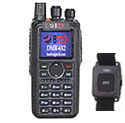 DMR6X2 PRO Dual Band (Review) Anytone 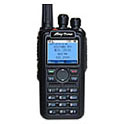 D878UV II+ Dual Band (Review)  D578UV Series Mobiles Hotspot  SkyBridge MAX (Review) Ailunce 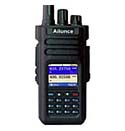 HD1 / GPS (Review) Amplifiers  BTECH DMR Amps UHF VHF (Review) Repeaters  Ham / GMRS Commercial Repeaters Duplexers |




